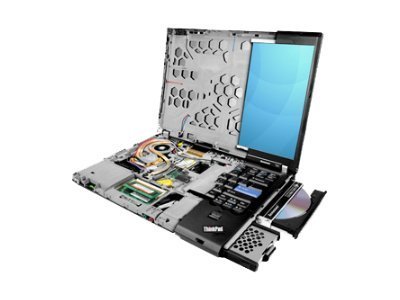Why ThinkPads?
Comfortable to use
Classic ThinkPads, and some other brands of older laptops, have higher screen resolutions than what’s standard right now. Most laptops now are widescreen, meaning 1366x768 pixels, which is too little vertical height. To get an “HD” display 900 or 1080 pixels high costs extra. The ThinkPad T500 has a 1650x1080 display, and the T61p has either 1680x1050 or 1920x1200. A Retina MacBook Pro has more pixels than that, but it costs around $1,500.
The ThinkPad keyboard is also famously well-designed. They keys are large and slightly concave, so you won’t slip and hit an adjacent key. It doesn't flex when you press down on the keys because of the magnesium frame underneath. And it has a comparable number of keys with a full desktop keyboard, whereas modern laptops tend to shrink or leave out the lesser-used keys.
Durable
ThinkPads are built with carbon-fiber-reinforced plastic, and inside they have a magnesium roll cage that protects the components and keeps the body from flexing under pressure.

An X-ray view of the roll cage inside a ThinkPad.
They also have drain holes under the keyboard that redirect any spilled liquid back out. If you spill some water on it, you should still turn it off, remove the power adapter and battery, and wait for it to completely dry, but afterwards the water won’t be sealed inside with the electronics.
If any components do break—hard drives and RAM can fail in any computer—they’re easy to replace. The RAM isn’t soldered in, unlike some more recent machines, and it’s easy to access; you just need a Philips screwdriver. (Not a proprietary Torx one.)
Some parts can be exchanged completely. The Lenovo UltraBay lets you slide out the CD/DVD drive and replace it with a second hard drive, an extra battery, or leave it unused for less weight and more battery life.
